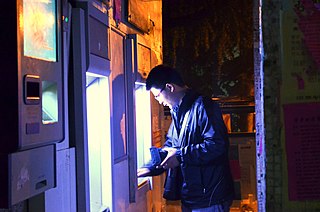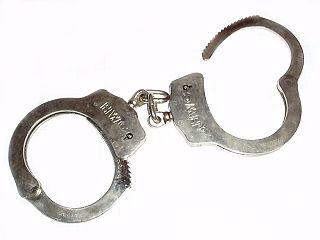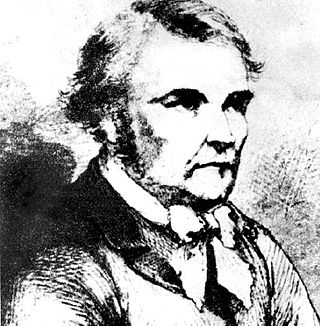This article needs additional citations for verification .(July 2017) |
Signature forgery refers to the act of falsely replicating another person's signature.
This article needs additional citations for verification .(July 2017) |
Signature forgery refers to the act of falsely replicating another person's signature.
Several different methods can be used to forge signatures. One method is the "freehand method", whereby the forger, after careful practice, replicates the signature by freehand. Although a difficult method to perfect, this often produces the most convincing results. [1]
In the "trace-over method", the sheet of paper containing the genuine signature is placed on top of the paper where the forgery is required. The signature is traced over, appearing as a faint indentation on the sheet of paper underneath. This indentation can then be used as a guide for a signature. [1]
A number of characteristics can suggest to an examiner that a signature has been forged, mostly stemming from the forger focusing on accuracy rather than fluency. These include: [1]
A signature is a handwritten depiction of someone's name, nickname, or even a simple "X" or other mark that a person writes on documents as a proof of identity and intent. The writer of a signature is a signatory or signer. Similar to a handwritten signature, a signature work describes the work as readily identifying its creator. A signature may be confused with an autograph, which is chiefly an artistic signature. This can lead to confusion when people have both an autograph and signature and as such some people in the public eye keep their signatures private whilst fully publishing their autograph.

Authentication is the act of proving an assertion, such as the identity of a computer system user. In contrast with identification, the act of indicating a person or thing's identity, authentication is the process of verifying that identity. It might involve validating personal identity documents, verifying the authenticity of a website with a digital certificate, determining the age of an artifact by carbon dating, or ensuring that a product or document is not counterfeit.

A digital signature is a mathematical scheme for verifying the authenticity of digital messages or documents. A valid digital signature on a message gives a recipient confidence that the message came from a sender known to the recipient.

Forgery is a white-collar crime that generally refers to the false making or material alteration of a legal instrument with the specific intent to defraud. Tampering with a certain legal instrument may be forbidden by law in some jurisdictions but such an offense is not related to forgery unless the tampered legal instrument was actually used in the course of the crime to defraud another person or entity. Copies, studio replicas, and reproductions are not considered forgeries, though they may later become forgeries through knowing and willful misrepresentations.

Autograph collecting is the practice of collecting autographs of famous persons. Some of the most popular categories of autograph subjects are politicians, military soldiers, athletes, movie stars, artists, social and religious leaders, scientists, astronauts, and authors.
Mark William Hofmann is an American counterfeiter, forger, and convicted murderer. Widely regarded as one of the most accomplished forgers in history, Hofmann is especially noted for his creation of fake documents related to the history of the Latter Day Saint movement. When his schemes began to unravel, he constructed bombs to murder three people in Salt Lake City, Utah. The first two bombs killed two people on October 15, 1985. On the following day, a third bomb exploded in Hofmann's car. He was arrested for the bombings three months later, and in 1987 pleaded guilty to two counts of second-degree murder, one count of theft by deception and one count of fraud.
James Townshend Saward was a Victorian English barrister and forger also known by the nickname of Jem the Penman. In addition to his legal career he forged money orders for almost 30 years.

In forensic science, questioned document examination (QDE) is the examination of documents potentially disputed in a court of law. Its primary purpose is to provide evidence about a suspicious or questionable document using scientific processes and methods. Evidence might include alterations, the chain of possession, damage to the document, forgery, origin, authenticity, or other questions that come up when a document is challenged in court.

Art forgery is the creation and sale of works of art which are falsely credited to other, usually more famous artists. Art forgery can be extremely lucrative, but modern dating and analysis techniques have made the identification of forged artwork much simpler.
Joseph Cosey is the favorite alias of notorious forger Martin Coneely. He was very skilled at mimicking the handwriting of historical American figures.

Denis Vrain-Lucas was a French forger who sold counterfeit letters and other documents to French manuscript collectors. He even wrote purported letters from biblical figures in French.

Identity document forgery is the process by which identity documents issued by governing bodies are copied and/or modified by persons not authorized to create such documents or engage in such modifications, for the purpose of deceiving those who would view the documents about the identity or status of the bearer. The term also encompasses the activity of acquiring identity documents from legitimate bodies by falsifying the required supporting documentation in order to create the desired identity.
Robert Spring (1813–1876) was an English-born forger who forged letters from luminaries like George Washington, Benjamin Franklin and Horatio Nelson.
An electrostatic detection device, or EDD, is a specialized piece of equipment commonly used in questioned document examination to reveal indentations or impressions in paper that may otherwise go unnoticed. It is a non-destructive technique, allowing further tests to be carried out. It is a sensitive technique capable of detecting indentations on pages several layers below the top sheet and many years after the indentations were created.

In general, philatelic fakes and forgeries are labels that look like postage stamps but have been produced to deceive or defraud. Learning to identify these can be a challenging branch of philately.

Literary forgery is writing, such as a manuscript or a literary work, which is either deliberately misattributed to a historical or invented author, or is a purported memoir or other presumably nonfictional writing deceptively presented as true when, in fact, it presents untrue or imaginary information or content.
Karl Feoder Sim, also known as Carl Feoder Goldie was a New Zealand art forger, and the only person convicted of that crime in New Zealand.
A cliché coin forgery is a type of counterfeit coin produced using a genuine coin to impress a design into silver foil. Evidence of the probable manufacturing technique are finds of small lead sheets with multiple coin impressions and also fragments of impressed foils or complete 'coins'. The process seems to have involved the following steps. First, sandwiching a genuine coin between a fold of foil, generally silver, with a thickness of 50-100 microns. This was then placed between lead sheets and the pile struck with a hammer. This resulted in the foils taking an impression of each face of the coin simultaeously, also incidentally transferred to the lead sheets. The folded foil was then removed and the resulting obverse and reverse impressions were then simply soldered together, usually with tin-lead solder. The final sandwich was then trimmed to size, possibly with a 'pastry cutter' type tool, forming a circular coin.
Leonore Carol "Lee" Israel was an American author known for committing literary forgery. Her 2008 confessional autobiography Can You Ever Forgive Me? was adapted into the 2018 film of the same name starring Melissa McCarthy as Israel.
Operation Bullpen was an FBI investigation into forged celebrity autographs and sports memorabilia that ran from 1999 until 2006. The investigation uncovered $100 million worth of fraud that occurred in the United States.